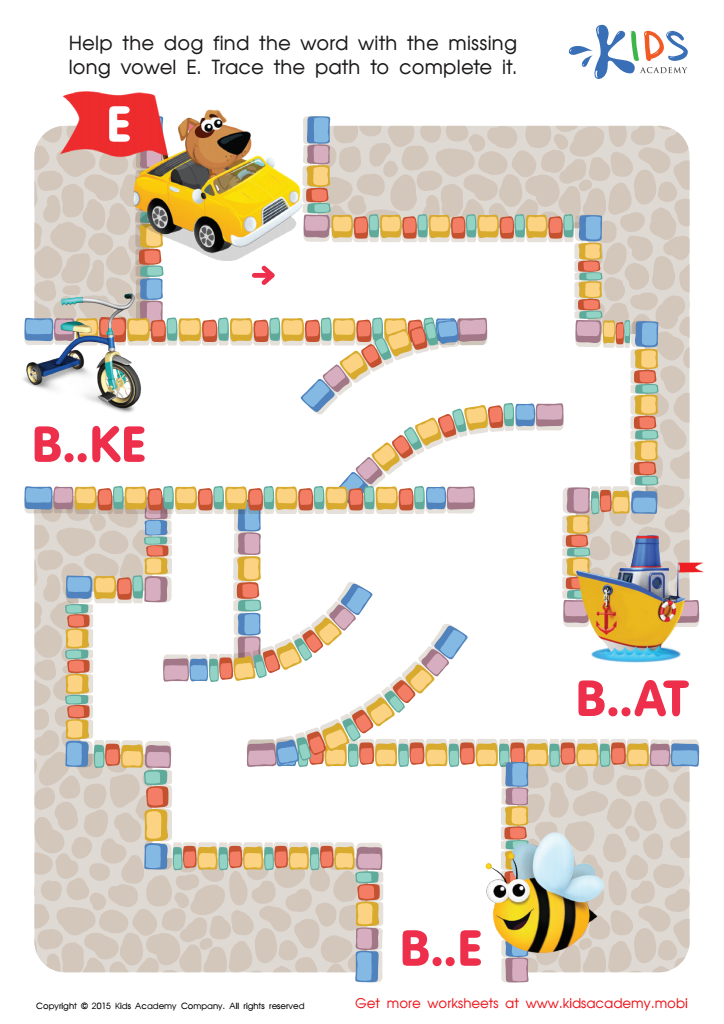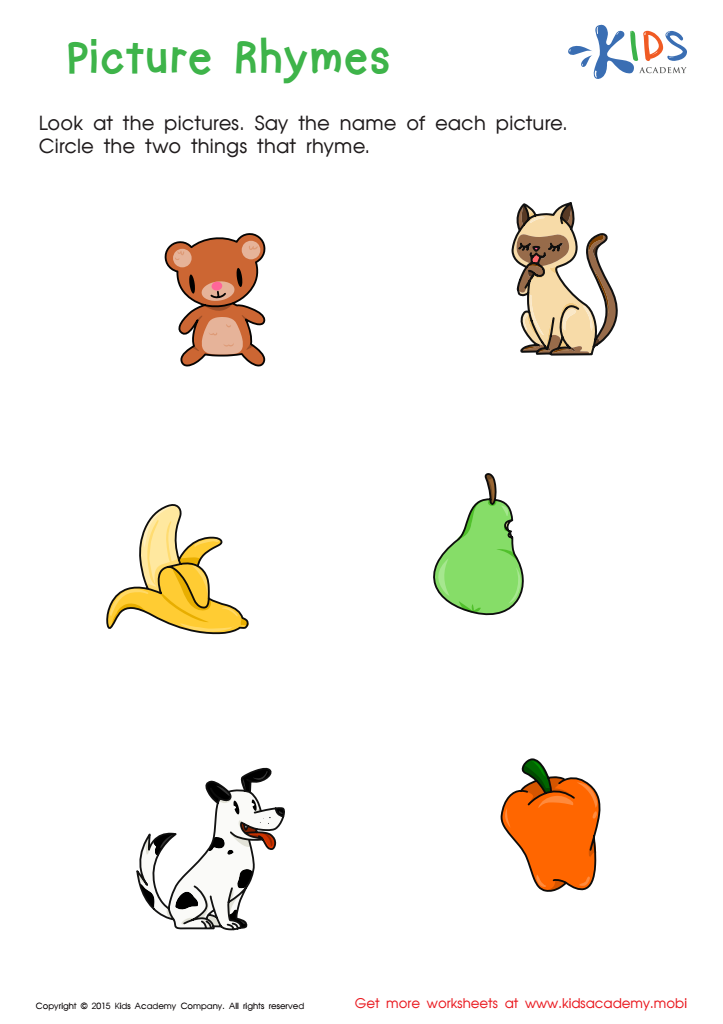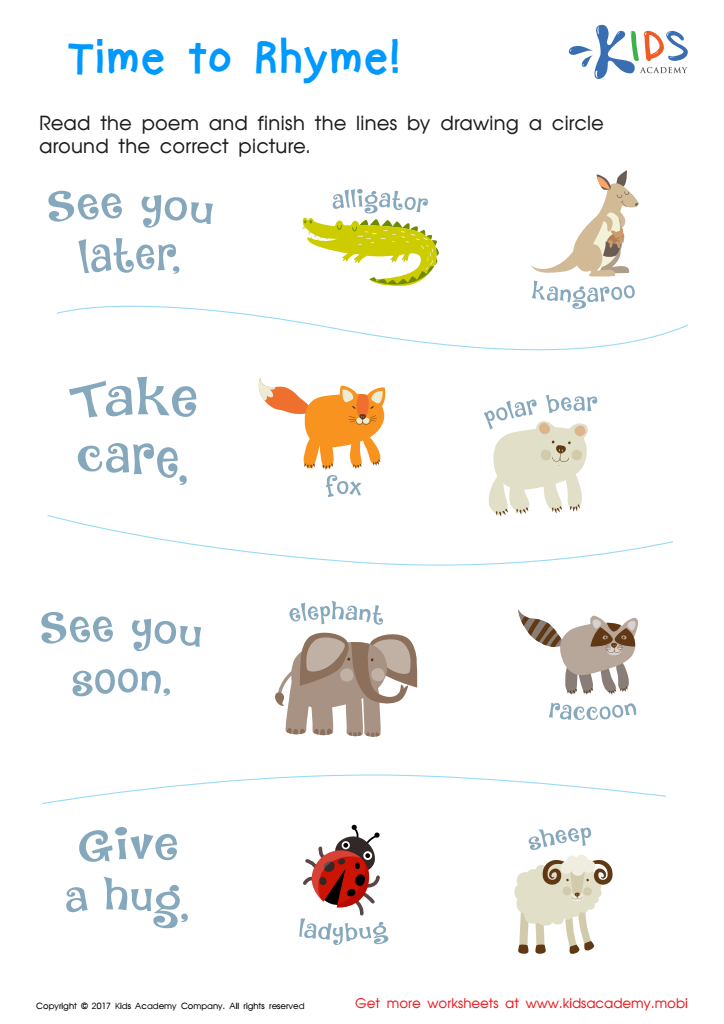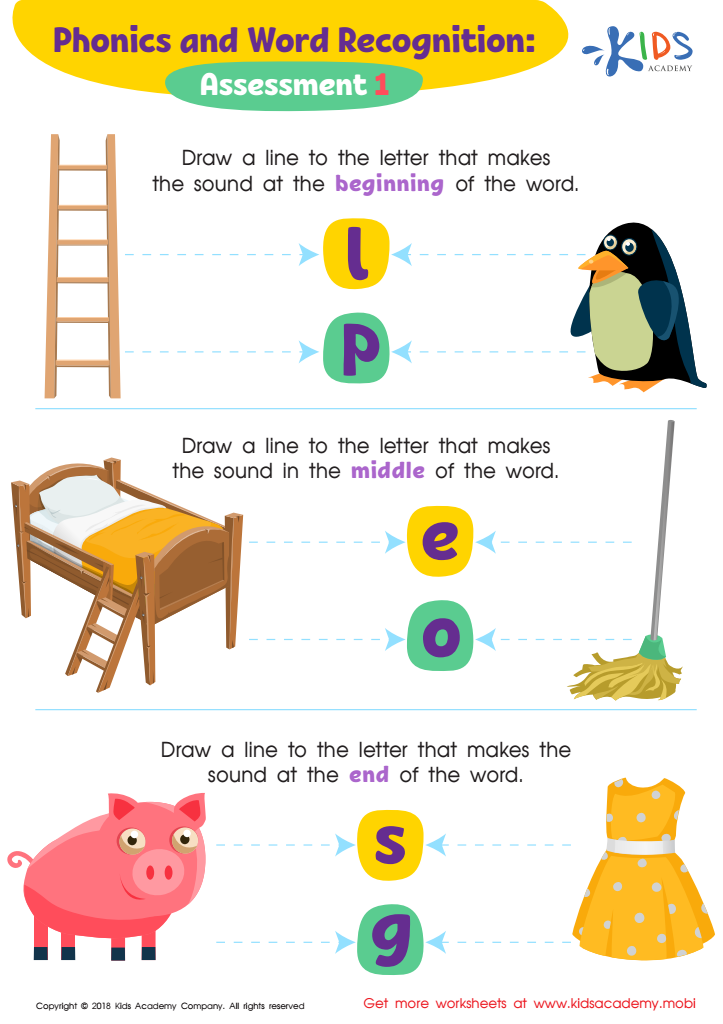Reading comprehension Normal Phonics Worksheets for 3-Year-Olds
6 filtered results
-
From - To
Discover our engaging Reading Comprehension Normal Phonics Worksheets designed specifically for 3-year-olds! These worksheets provide a fun and interactive way to introduce young learners to the fundamentals of phonics and reading comprehension. Each activity encourages children to identify letters, sounds, and simple words, enhancing their literacy skills while fostering a love for reading. Our easy-to-use worksheets are perfect for preschool educators and parents alike, featuring colorful illustrations and activities that captivate young minds. Help your child build a strong foundation in reading through play and exploration with our carefully crafted phonics worksheets. Start your journey to early literacy today!


Rhyming Words Rhyming Worksheet


Long Vowel Sound E Worksheet


First Words: Picture Rhymes Worksheet


Time to Rhyme Rhyming Worksheet


Long and Short E Worksheet


Phonics and Word Recognition: Assessment 1 ELA Worksheet
Parents and teachers should prioritize reading comprehension and phonics for 3-year-olds because these foundational skills are crucial for a child's overall literacy development. Early exposure to reading concepts helps to foster a love of books and reinforces the connection between sounds and letters, a key component of phonics. When children grasp phonics, they begin to decode words, enhancing their ability to read independently later on.
Furthermore, reading comprehension ensures that a child not only recognizes words but also understands their meaning, which is necessary for effective communication and cognitive growth. This early comprehension promotes vocabulary expansion and strengthens listening and speaking skills.
Incorporating playful activities, such as engaging storytime or phonics games, can captivate a child's interest, making learning enjoyable. Ultimately, these skills laid down at age three set the stage for future academic success, preparing children for their formative years in school. By fostering an early interest in literacy, parents and teachers can equip children with essential tools to navigate the world of books, sparking curiosity and a lifelong love of learning. Investing in reading comprehension and phonics at this stage fosters confidence and readiness for the educational journey ahead.
 Assign to My Students
Assign to My Students




















